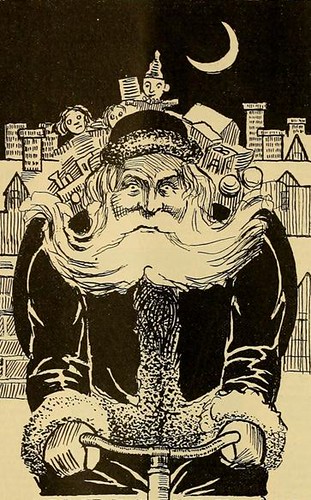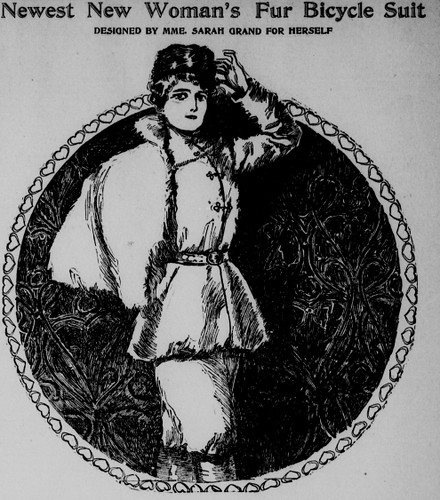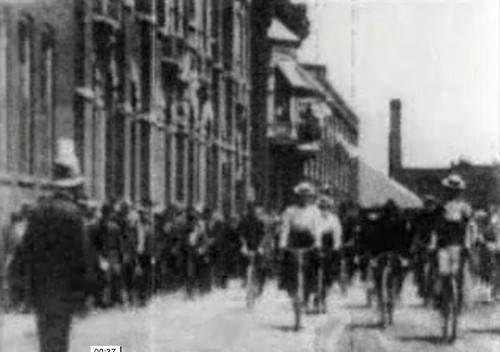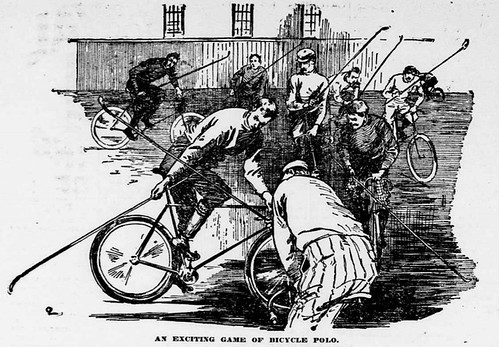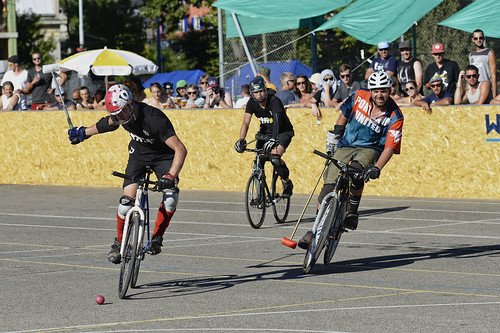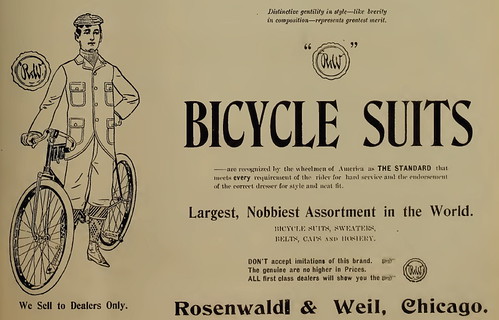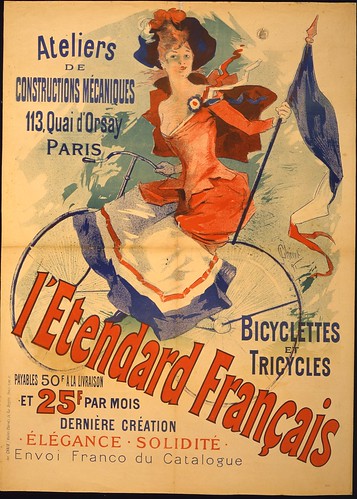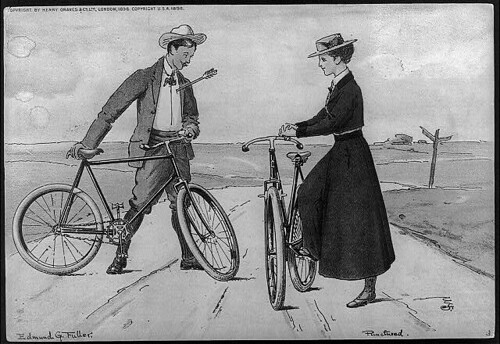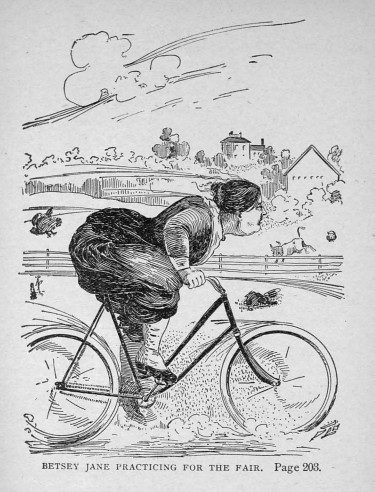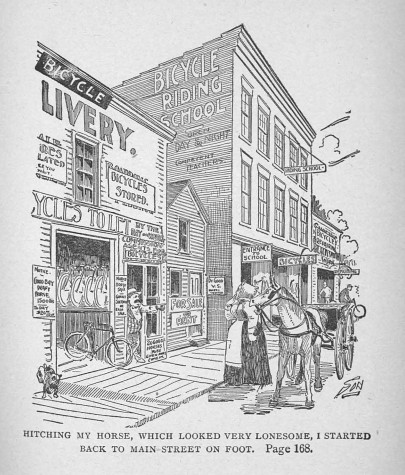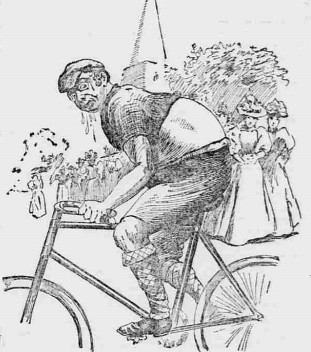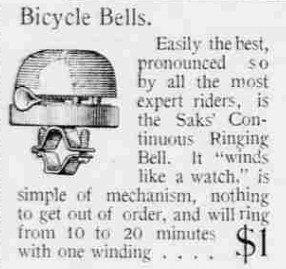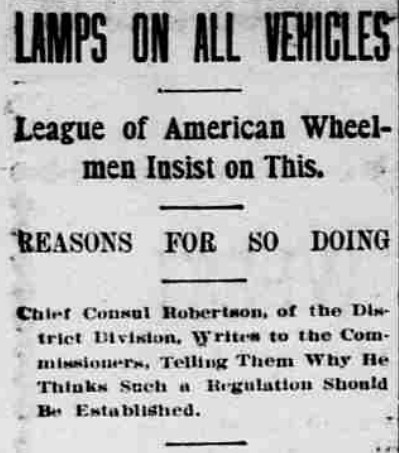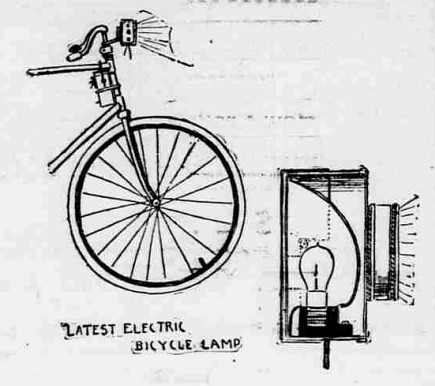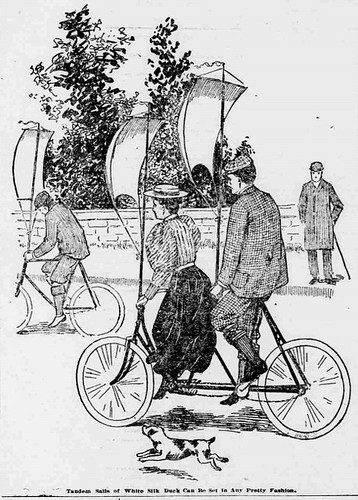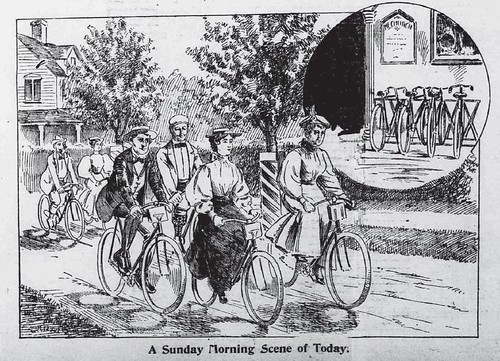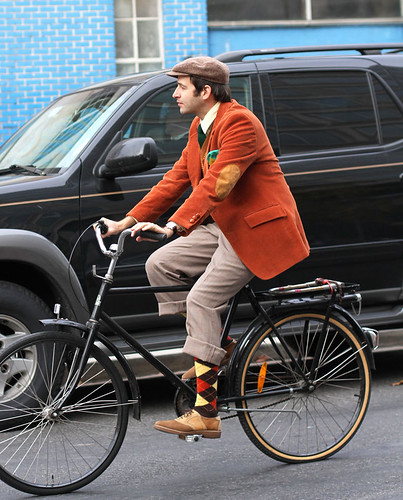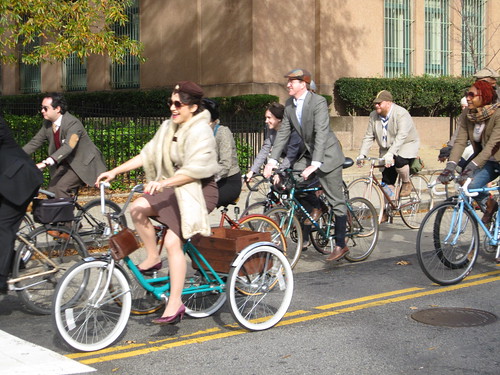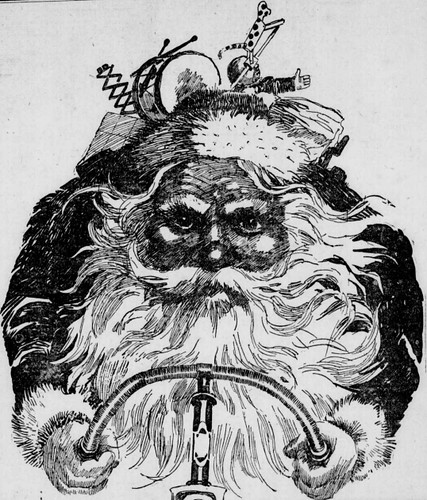
From the Richmond Dispatch newspaper, December 19, 1897. Illustration above accompanied the text of dozens of letters to Santa Claus from children in Richmond Virginia, including these that have requests for bicycles.
Dear Santy Claus:The next letter is from the same family ~
I want you to bring me a bicycle, a lock-bracletle, a doll-baby, sewing machine, and nuts, candies, fruit of all kind,and popcracker all kind; and bring them to my address, 216 N. 21 St.
Your little friend.
NORVELL EUBANK
Several letters are worded as if Santa's delivery of the items personally isn't part of how they understand things ~
Dear Saunta Cause:
Please bring me a gun, a pound of shot, a bicycle, and some fireworks; that is all. I live at No. 216 21st Street.
Your little boy.
WILLIE EUBANK.
1212 Floyd Avenue,
Dear Santa Claus:
I want a bicycle and a watch and chain and a harp and a drum. That's all.
Your little boy, ELLETT READY.
Dear Santa Claus:
I wish you would bring me a bicycle and a bunch of switches; a pack of popcrackers, a box of candy, a air-rifle, and a pound of shot. Yours truly,
THOMAS MOSELEY.
1401 Grove avenue.
A number of letters included requests for others ~
Dear Santa Claus:
Richmond. Va. Dec. 2d.
Please send me a bycycle, and it will be thankfully received.
Yours respectively,
HEBERT GILMAN.
Dear Santa Claus:
Please send a bicycle and a wagon & goat and harness. From your little boy,
OWEN LEWS,
1123 Floyd Ave., Richmond, Va
I was surprised by the extent of the requests made by many of the children's letters; this one balances that out somewhat.
Dear Santa Claws:
I am a little boy 3 1/2 years old. I want you to bring me a bicycle, and a pack of popcrackers, a horn, and some candy. Phase bring Minerva (our colored girl) a bicycle, too, and my little brother Harold, something pretty. I am going to be a good boy, and go to bed real soon. Please come, Santa Claus; don't forget.
FRANK CAVEDO.
Richmond, Va,
207 S. Pine St
Dear Santa Clause:
Christmas is nearly here, and I would like for you to bring me something nice. I will be thankful for anything that you bring me. From your little boy,
LYNWOOD BRYANT.
A few years ago I had a blog post with the similar illustration, shown below, taken from an ad for Stearns bicycles from the bicycle industry journal "Cycling Life" (issue for December 24 issue, 1896).
